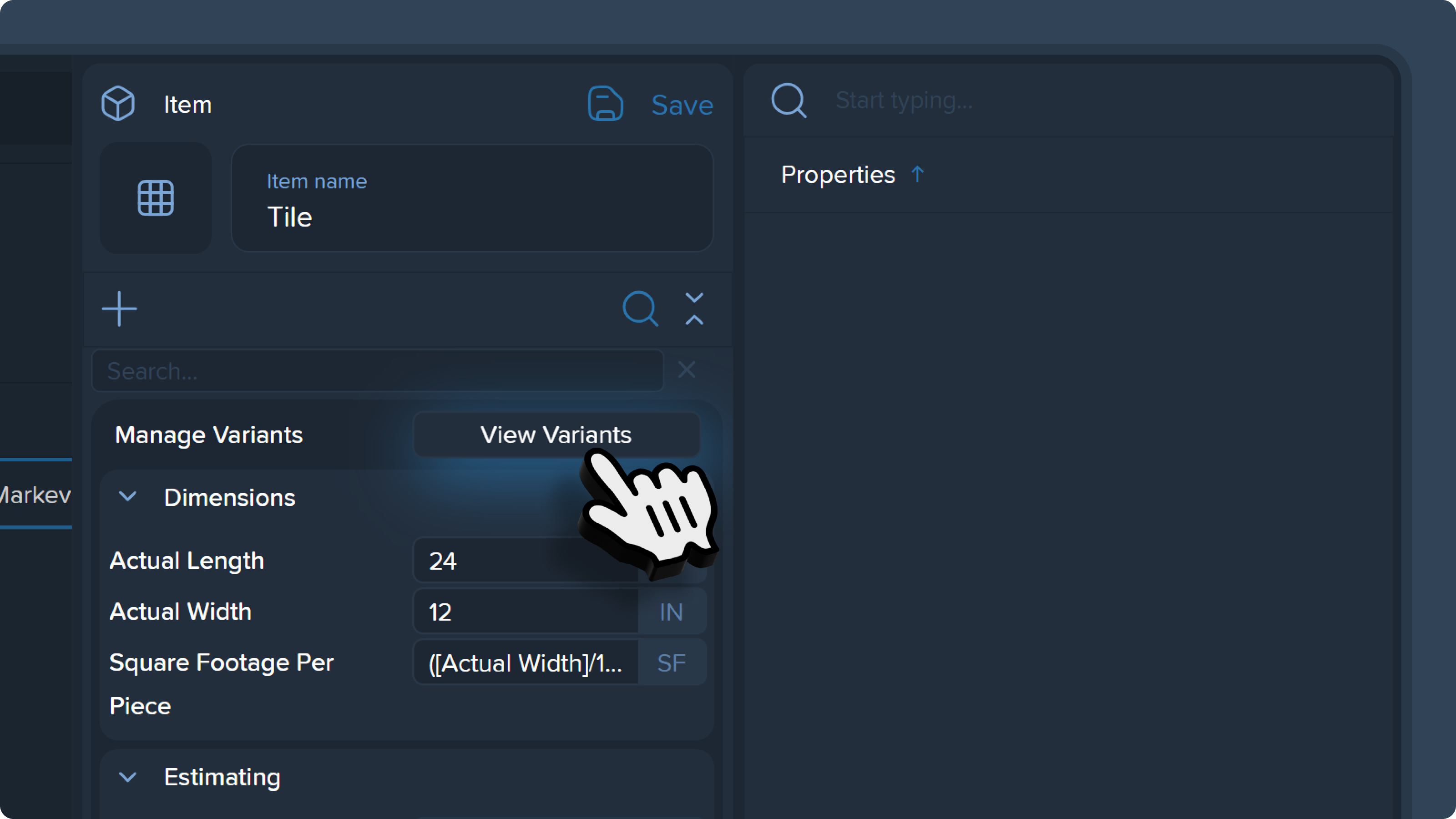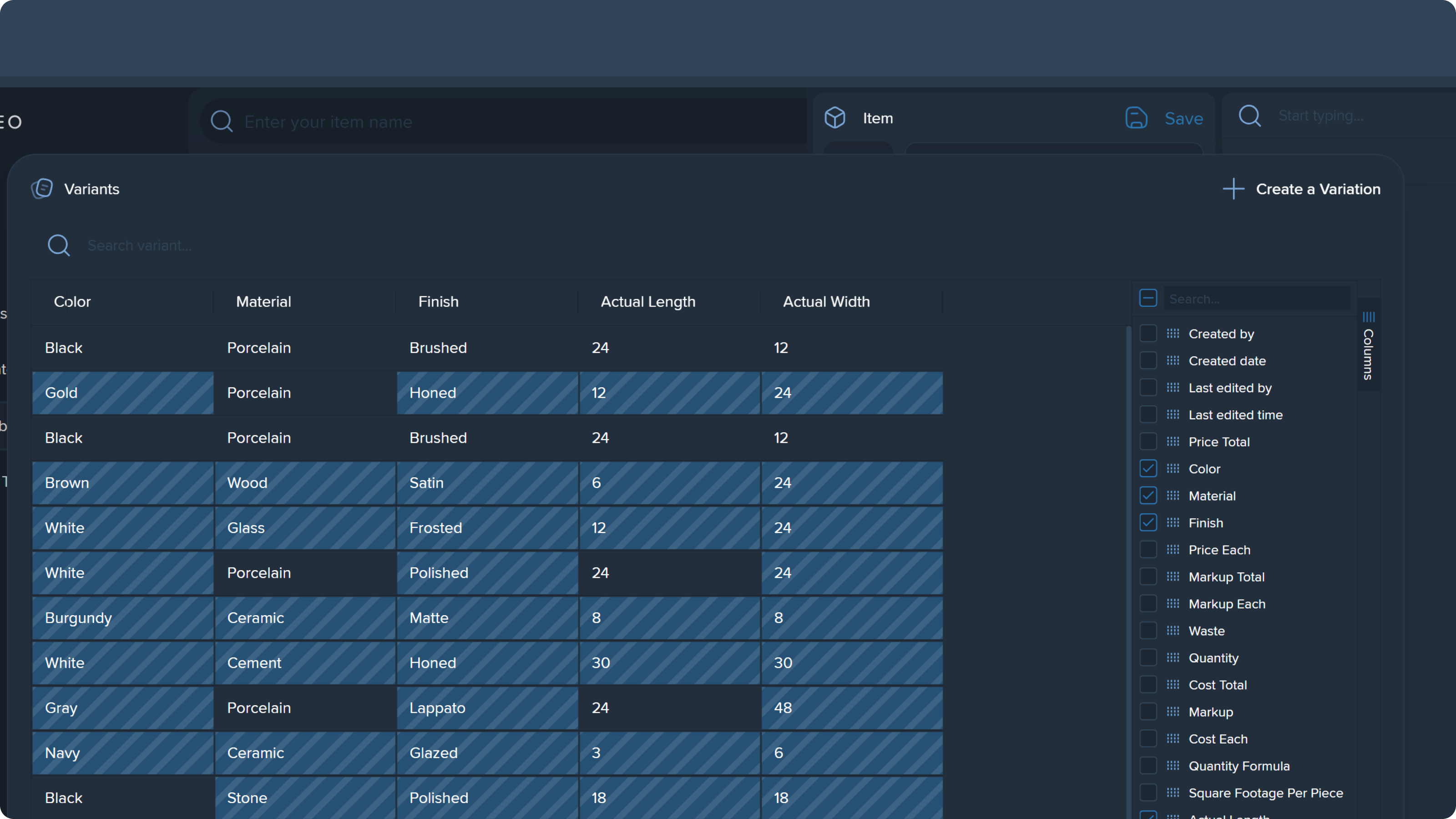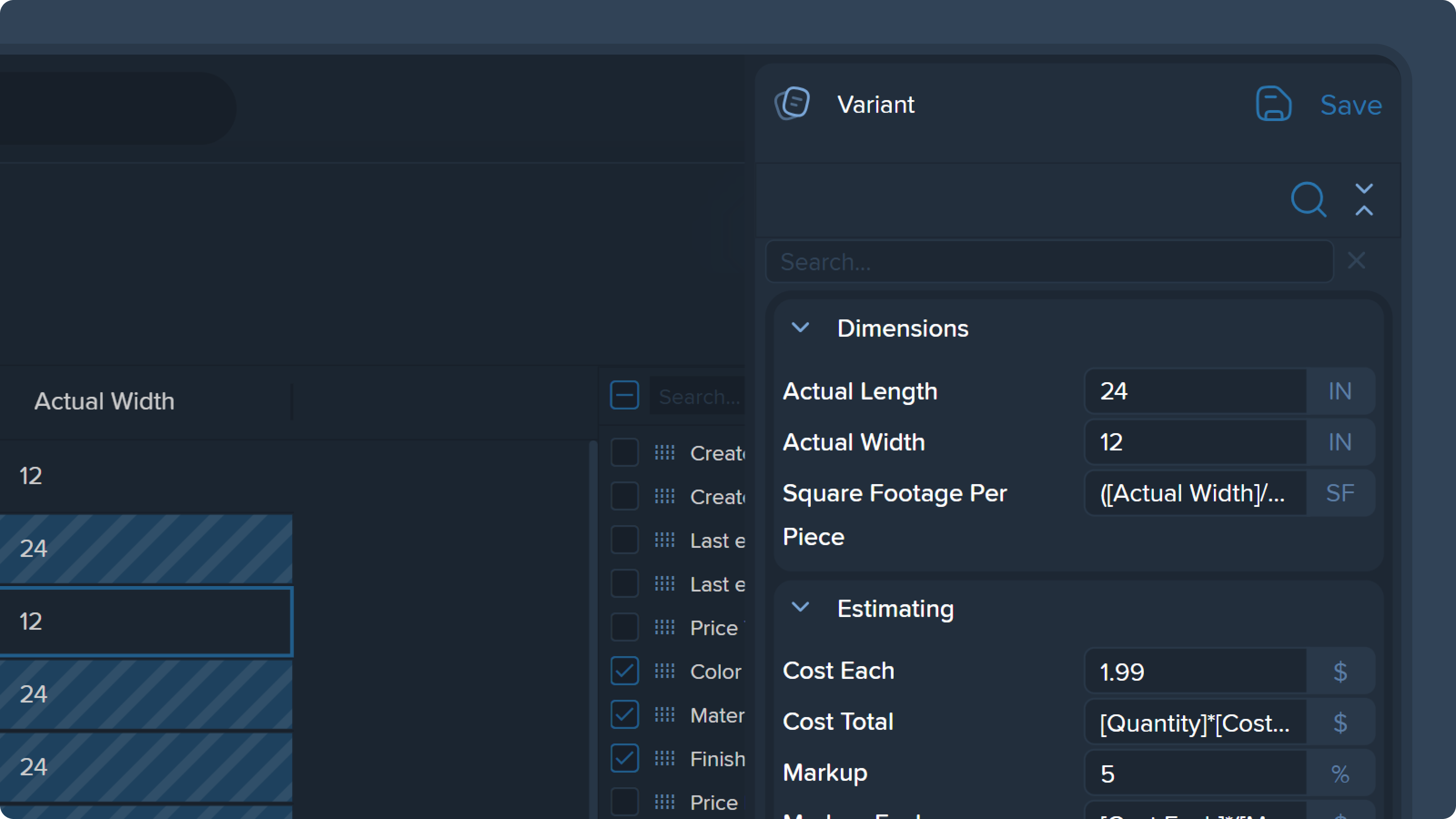
Item Variants in Kreo are saved versions of a single base Item within your Assemblies Database.
This feature allows you to group similar items under one common name, even if they differ by several key properties—such as size, material, color, or price.
Instead of creating many separate items for each type, you can create one base Item (e.g., for "Tile") and then set up multiple Item Variants for it, each with its own unique properties (e.g., for different sizes or colors).
This helps keep your database clean and organized, making item management much easier.
Creating a new Item Variant for an existing item is very simple.
Navigate to the Assemblies Database from the main menu.
In the Items tab, find and select the base Item you want to create an Item Variant for. Its properties will appear in the panel on the right.
In the Properties panel, click the Manage Variants button.

You will be taken to the Variants tab. Here, you will see a list of all existing Item Variants for this item.

Click the + Create a Variation button at the top of the list to add a new Item Variant.

A new row for your Item Variant will appear in the list. Click on it to select it and open its properties in the panel on the right.
Change any properties that should differentiate this Item Variant from the base Item. This could be price, dimensions, SKU, color, or any other custom property you have set up in your database.

Important: The base Item name will remain common for all Item Variants. To easily distinguish between Item Variants when selecting them, make sure you give them unique and clear values in their characteristic properties.
Click Save in the top right corner to save your changes.

Creating Item Variants simplifies your workflow.
When you apply Items or Assemblies to measurements in your takeoff, you will first select the base Item.
Immediately after, Kreo will prompt you to choose which specific Item Variant of that item you want to use by showing a list with their differing properties (like size, color, etc.). This ensures that the correct calculations and data are applied to your measurements.